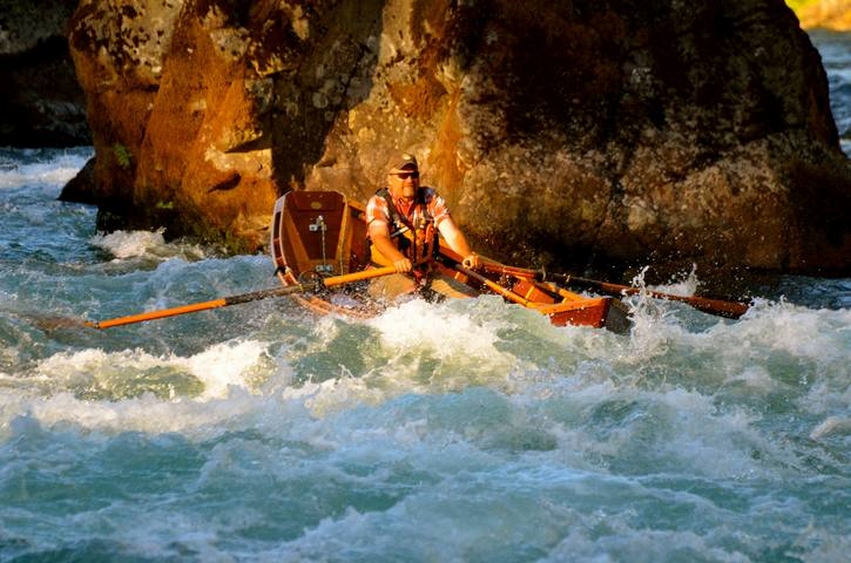
A Wooden Dory Makeover
By Greg Hatten
In the past few years my river dory, Obsession, has traveled a thousand rocky river miles in all kinds of weather, dodged a million rocks (and hit more than a few) while running rivers in Yellowstone, Tetons, Olympic, Rocky Mountain, Rainier and a dozen other National Parks.
This dory has run backward through a rapid on the Rogue River, run sideways through a rapid on the McKenzie River, and slammed into a wall at Mule Creek Canyon on the Rogue River so hard that it split a rib, shattered an oarlock, and was put out of commission for a month.
Obsession has given me more pleasure and pride than just about anything I have done in my life. It has taken me to wild and scenic places I never dreamed existed. It connects me to the river with a bond that comes from having built, rowed, wrecked, and repaired this boat with my own two hands. I used lots of WEST SYSTEM Epoxy in the original build, as well as in every single repair I’ve made over the years.
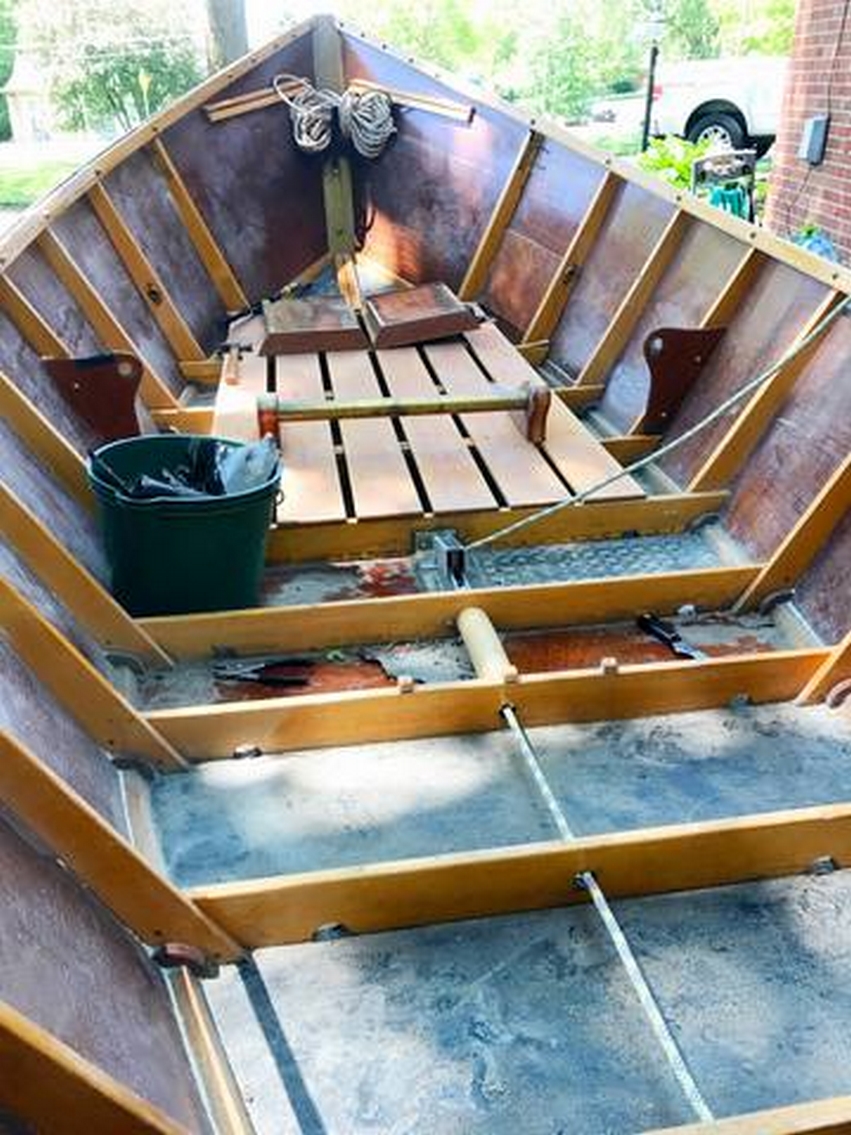
Obsession has given guests on my boat experiences they will remember for the rest of their lives.
This handcrafted drift boat is built of wood. Every mark on it represents a story of adventure and a brush with disaster. My dory has spent a lot of time at the intersection of Chaos and Calm—where worlds collide on the rivers out west. The test of nerve and skill in a boat made of wood is a challenge that I’m as passionate about now as I was the very first time I rolled Obsession down the boat ramp—more than ten seasons ago.
River rocks and granite walls are unforgiving. Unfortunately, it’s my boat that pays the price and takes the beatings. Things happen. Those mishaps cause stress fractures, hairline cracks, and holes in the boat that must be repaired. The sides need to be varnished annually, and the everyday scrapes, dings, and dents are sanded and fixed on a regular basis.
This winter, I decided I would treat my boat to a full-service makeover. I declared this off-season The Season of Repair. As part of the Obsession’s tune-up, I removed every piece of wood that was removable, stripped the hull down to a shell, then restored, rebuilt, and refinished every single piece. You might say I got a little obsessive.
First, I took the boat off the trailer and turned it upside down. I removed about 70 stainless steel screws and the ¼”-thick UHMW plastic shoe from the bottom of the boat so I could repair a few cracks, checks, and “push-ups” in the wooden bottom. I was relieved that there were no serious holes or dead spots.
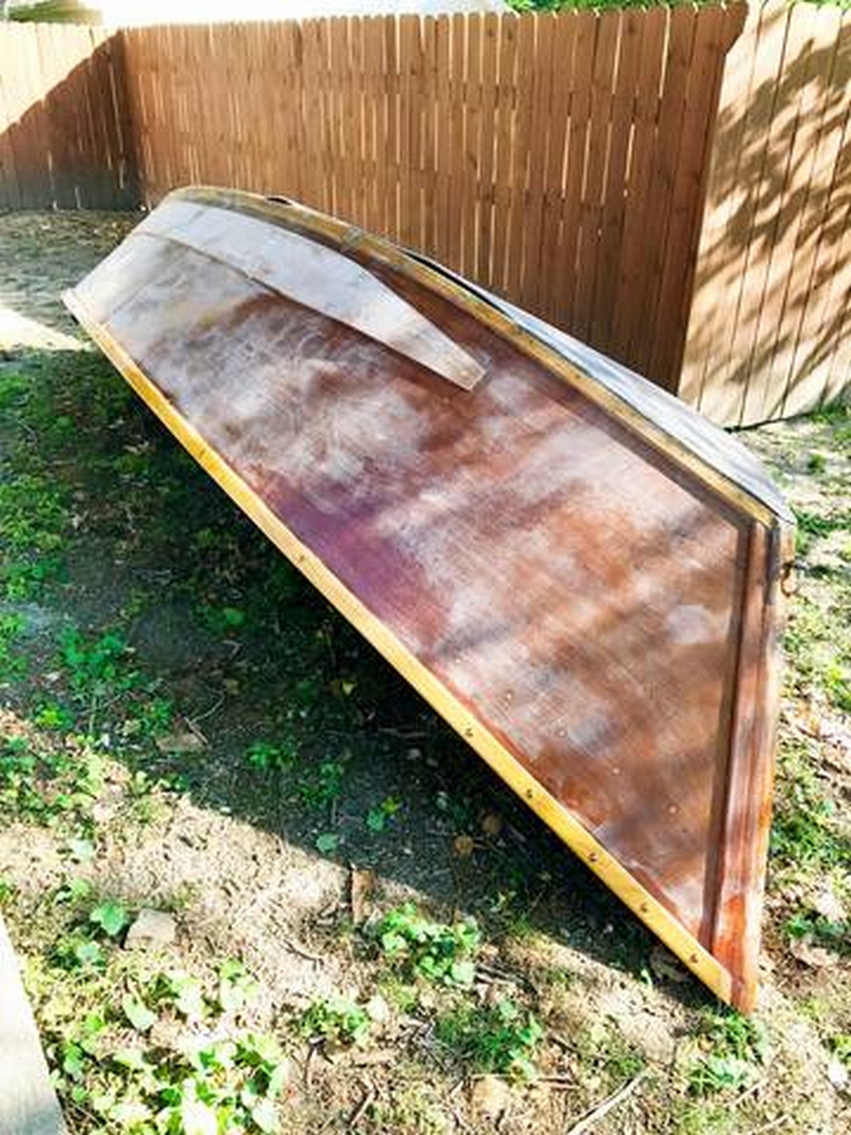
I drilled out and plugged every screw hole in the bottom of the boat. Every screw represents a point of entry for water. Eventually, water will find a way to seep in and rot out the wood around the screws.
After lots and lots of sanding, I resealed the wood bottom with two coats of WEST SYSTEM Epoxy, making the bottom smooth as glass. With the bottom sealed, I reattached the plastic shoe by drilling fresh holes and fastening it with new stainless steel wood screws bedded in marine caulk.
Next, I flipped the boat right-side up and went to work on the interior. First, I repaired and reinforced hairline cracks in three of the Alaskan yellow cedar frames—#1, #2 and #9. As part of that process, I removed the oak dashboard with the mahogany knee braces and stripped and refinished every inch of it. I also removed the mahogany fly deck in the front of the boat and stripped and refinished that.
On the inside bottom of the boat, I stripped the weather-faded Durabak™ polyurethane protective coating (truck bed liner) on the floor, repaired all the inside “push-ups” by sanding down the checking, and repaired it with WEST SYSTEM Epoxy. When it was smooth as glass, I reapplied a fresh coat of Durabak with a roller and paint brush.
I repaired and refinished the fun stuff–the cup holders, passenger bench, mahogany rod holder, and the fly boxes on the rowing thwart. I reworked the oarlock pins and rebuilt the mahogany drawers on the rowing bench.
Then, I did something I’ve wanted to do for several years. I redesigned the rowing seat and raised it up two inches by adding a solid piece of mahogany to the braces on each side. The result is an elevated platform with a better view of the river over the heads of my passengers in front. To finish it off, I restrung the rowing seat with brand new black marine rope.
The yellow cedar floorboards in the front and back needed work. I sanded these down and refinished them. I also added a floor lock to the floorboards in back to keep them from flopping around, something else I’d wanted to do that for years.
The “bar in my boat” gets a lot of use. I originally designed and built it to give my feet something solid to push off of for greater leverage and power when I really need to move the boat. While I loved the patina and tarnish of the brass bar, I gave it a new look by polishing the brass and refinishing the support braces.
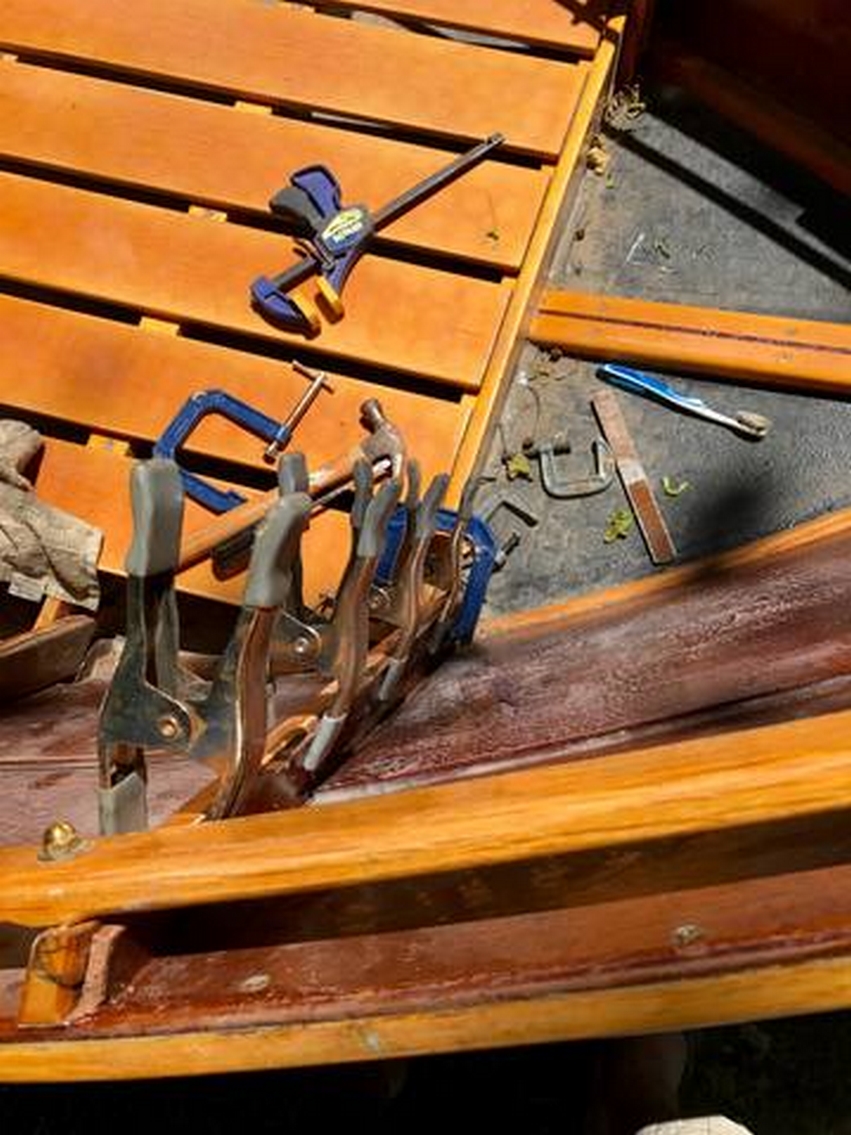
The mahogany front stem was looking a little beat up as the first line of defense when my boat hits high rocks or canyon walls. I built it as a replaceable piece so that when it becomes too damaged I can build a new one and replace it. I’m not quite ready for that… but close. This time, I repaired and restored the original front stem
The last thing I did was lightly sand the entire boat and apply three coats of Pettit Z-Spar Flagship Varnish inside and out.
It took almost 100 hours of attention, one gallon of WEST SYSTEM 105 Resin with 207 Special Clear Hardener, a cartridge of Six10 Thickened Epoxy Adhesive, one gallon of Pettit Z-Spar® Flagship Varnish, two quarts of Durabak protective coating for the floor, 40 feet of rope, 75 discs of 220-grit sandpaper, 120 new stainless steel 1″ wood screws, seven paper dust masks, a ton of patience, and a little obsession.
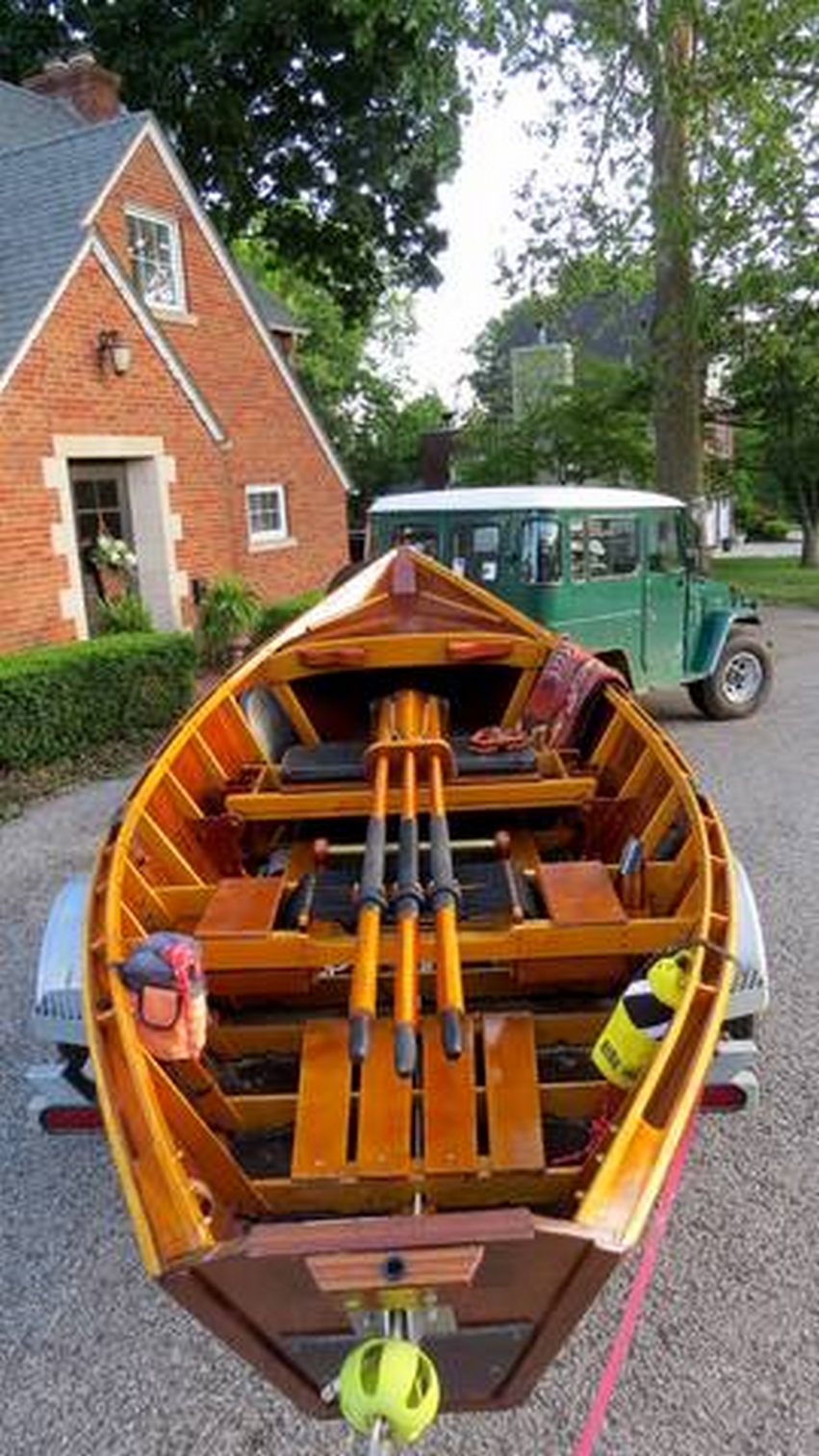
I have a busy season of boating ahead and a number of National Parks on my agenda including the Buffalo National River, Teddy Roosevelt National Park, Glacier National Park, and the Wild and Scenic Middle Fork of the Salmon River in Idaho. Many of Obsession’s scars remain visible and most of them have a story to tell. Every single mark or dent is evidence of heroic runs, colossal blunders, lucky breaks, bad timing, or close calls in a boat that has visited some of the most beautiful and treacherous rivers in North America. They are marks of character, and I’m kind of proud of each one.

